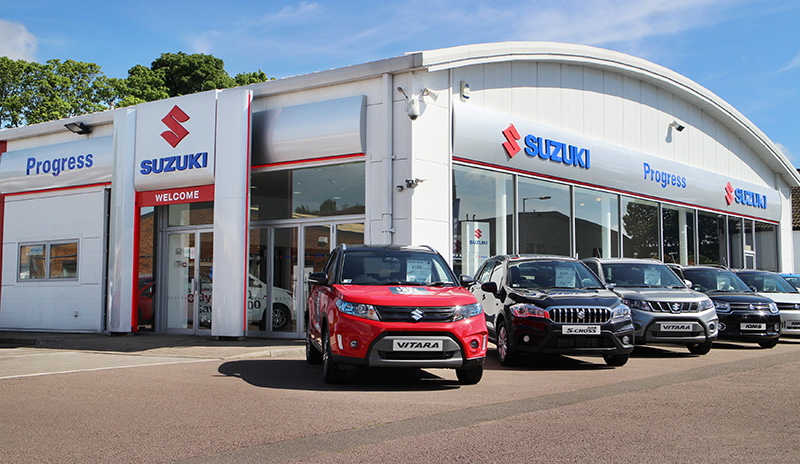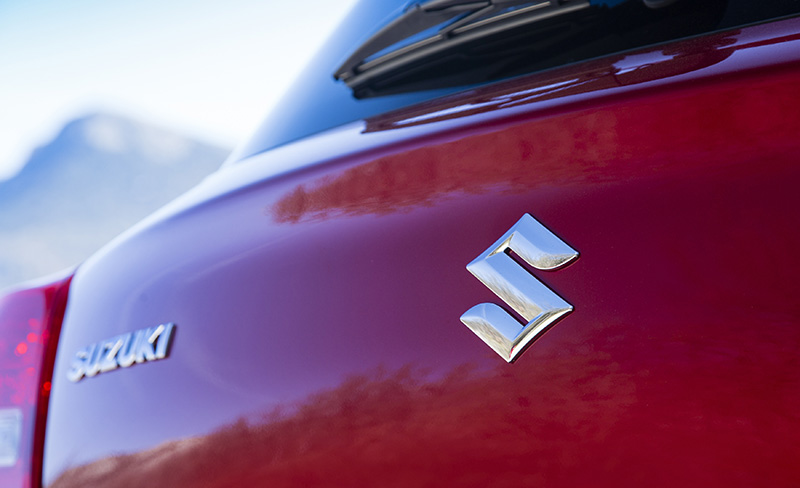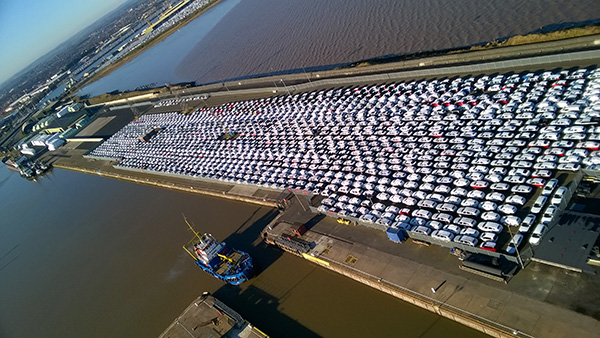 A prolonged period of strong sales growth in the UK means Suzuki now imports more than double the number of vehicles it did five years ago into the country. This expansion has put pressure on the company’s finished vehicle supply chain. It has also come at a time when customer expectations for delivery visibility and accuracy have risen dramatically.
A prolonged period of strong sales growth in the UK means Suzuki now imports more than double the number of vehicles it did five years ago into the country. This expansion has put pressure on the company’s finished vehicle supply chain. It has also come at a time when customer expectations for delivery visibility and accuracy have risen dramatically.
[in_this_story align="right" border="yes"]While the data systems that Suzuki previously used to track and distribute vehicles to dealerships had proved adequate, a confluence of events just over a year ago showed that more focus on this part of the business was desperately required. Changes put into place since then – including a new event management and estimated time of arrival (ETA) system – are already having positive impacts.
Despite only making up 1.4% of the overall UK car market, the Japanese brand has had a good stretch of growth, with sales reaching 38,190 vehicles in 2016, 3,730 more than a year earlier. This double-digit increase rate strongly outperformed the overall market rise of 2.25%. The trend has continued into 2017, with Suzuki sales up another 10.5% in the first five months of the year compared to the same period last year, despite the UK market declining.
Much of the sales growth has been thanks to the launch in March 2016 of the new, more customisable Vitara compact SUV range, supported by a strong marketing push that included well-known UK TV personalities, Ant and Dec.
March is always a busy time in the UK, as it is one of two registration changes in the year (along with September) that cause huge spikes. For Suzuki, therefore, its successful marketing campaign coincided with a significant supply chain bottleneck. As around 6,000-7,000 new Vitara models were arriving at the port of Zeebrugge in Belgium via train and deep-sea vessel, the carmaker was confronted with a fully stocked compound at Grimsby port in the UK, with no space for the newly launched items awaiting UK customers in Belgium.
The result was that as many as 1,500 customers had to wait until May to receive their new vehicles.

“There was a lot of investment on the front end, including marketing and advertising, but on the back end, we fell short,” explains Paresh Tailor, logistics [sta_anchor id="1"]manager at Suzuki Great Britain’s car division. He adds that in the economic price range in which Suzuki competes, there is little room for waiting. Customers may simply go elsewhere.
“So we went away last April and identified where the bottlenecks were,” he says.
Sold orders front of the queue Tailor, who has worked in logistics for over two decades, previously spent about seven years in Suzuki GB’s motorcycle division, where he oversaw the implementation of the company’s online sales and operation system in the UK market. This experience gave him an idea about what he hoped to see for the vehicle business when he took over its logistics in 2014.
The new system for motorcycles allowed for greater visibility of stock across the supply chain. With more information readily to hand, Tailor switched to a leaner logistics flow. Rather than storing bikes in three warehouses in the UK, he reduced to just one, allocating motorcycles from the delivery pipeline rather than just from the warehouses.
So successful was the project that six months after eliminating two warehouses, the company went down to using just half a warehouse.
The situation for the car division when he arrived was similar. Vehicles had to land in the UK and be stored at the port of Grimsby before they could be allocated to a dealer. A new system would give dealers the opportunity to sell cars in advance, including those that were still in transit to the country. Suzuki began introducing it in 2015, but it was not yet fully in place with dealers by the time of the Vitara launch.
“The difficult bit was that we changed the system but introduced new models at the same time. There were a lot of things for dealers to think about and structurally we weren’t ready for that either,” admits Tailor.
One of the major issues in implementing such a system, however, is accounting for dwell time in the supply chain. Many cars will spend just as long waiting at each transport node as they do travelling by rail or ship, for example. Removing any time here could provide a major improvement in overall delivery times, while visibility over handling at each of these stages greatly improves accuracy over delivery times.
 "Every morning [the control tower] is going to show [Suzuki] where the cars are, what cars are where, how many are on time, how many are in the sold orders and how many of them are at risk of missing delivery dates, so that these can be dealt with early enough before becoming a problem." - John Miller-Wilson, Sovereign Business Integration Group
"Every morning [the control tower] is going to show [Suzuki] where the cars are, what cars are where, how many are on time, how many are in the sold orders and how many of them are at risk of missing delivery dates, so that these can be dealt with early enough before becoming a problem." - John Miller-Wilson, Sovereign Business Integration Group
[related_topics align="right" border="yes"]It was here that Suzuki partnered with UK-based IT specialist, Sovereign, to use its EML cloud-based system for tracking vehicles and calculating vehicle ETA. The scope of the project is ambitious, with the intention of connecting information from all logistics providers across the chain, and ultimately halving the delivery lead time for sold orders from factory to customer.
But in the first instance, the system was used at a critical point in Suzuki’s import supply chain. At the port of Zeebrugge, Europe’s largest vehicle-handling port, the carmaker uses the International Car Operators (ICO) terminal to handle vehicles coming in via deep-sea vessel from plants in Japan, Thailand and India, and via rail from its plant in Esztergom, Hungary.
According to Tailor, the change in Suzuki’s model range in recent years has meant that the ratio of vehicles from these two modes of transport has switched over time to reflect more imports from Asia than the European plant, with 80% now coming via deep sea and 20% on the railway.
From Zeebrugge, vehicles move by short-sea to the port of Grimsby, where they are stored and handled by GBA Group, which is also responsible for transporting them to dealers.
To improve this distribution process, Suzuki has used EML to initiate a process whereby specific vehicle identification numbers (VINs) are highlighted for fast track delivery from Zeebrugge to Grimsby, and then on to dealers.
Today, a sold customer car that comes into Zeebrugge is identified, separated and put in the express lane. The car will be on the ship in three days, cutting as many as 12 days out of the logistics chain for the customer.
“Just by doing that, dealers have stock on the ground to sell, vehicles flow quickly through Grimsby and we get key models in at the right time,” says Tailor.
From the dealers’ point of view, this visibility has helped to increase the stock levels in their systems. While GBA Group added about 1,500 more parking spaces at Grimsby port to alleviate bottlenecks, the benefit has come in Suzuki and dealers identifying and receiving orders earlier. With the fast track service, they get the cars they most need much faster.
The result has been dramatic. Compared to 1,500 customers waiting for vehicles in 2016, the peak season in 2017 saw just 50 customer deliveries overflow into April, even as overall sales increased by around 10%.
“Now that we know what the dealers are ordering in advance, certain models in certain colours and specs, it is about how we get that car to them faster,” says Tailor.
[sta_anchor id="2"]Ultimately, just as he did for the motorcycle division, Paresh Tailor is aiming to change the mindset of Suzuki’s dealers in terms of car distribution. In the new system, the UK port should serve less as a stockholding facility and more as a transit point based on allocation and visibility of flows further upstream.
“We should have stock on the ground, but that stock should be turning and not just sitting there,” says Tailor.
ETA every step of the waySovereign Business Integration Group’s automotive roots go back to Ford, initially working with its former vehicle logistics provider in the UK, Ansa, before contracting directly with the carmaker’s outbound logistics operation (it stopped working with Ford several years ago). Thereafter, the company updated the EML system to make it more user-friendly and accessible across devices.
“Recognising that each client’s requirements and priorities are different, we have continued to invest R&D time into the system and built it so that it can be tailored to each clients’ requirements today and in the future,” says John Miller-Wilson, director of supply chain and logistics at Sovereign.
“For example, back in 2008, part of our continuous improvement plan to the solution was to take [EML] to a browser-based view. This way, we could ensure all who use the system can do so with ease and that it is easily accessible from anywhere in the world and from any device,” explains Miller-Wilson.
 Suzuki is still piloting the EML system with dealers, but rollout to its 158-strong network is due to start before the end of the summer
Suzuki is still piloting the EML system with dealers, but rollout to its 158-strong network is due to start before the end of the summerThe system provides OEM users with transparency throughout the supply chain with a platform to connect the ports, logistics companies and the dealers. Information on inventory, transport and handling is transmitted from terminal operator systems.
“So every time an operator touches a car in ICO, they interact with ICO’s system, and we have a link to that system,” says Miller-Wilson.
The system will eventually touch all transport legs of Suzuki’s supply chain, from factory to dealer. The link with GBA in the UK, for example, is a real-time web service that will work on a transaction-by-transaction basis, rather than transferring large files, with delayed information.
This dynamic measuring of data means that Sovereign’s system provides an estimated time of arrival that is updated each time there is a change in the car’s location.
The upshot, says Miller-Wilson, is that Suzuki sees information on its screen from the ICO that is, at most, 60 minutes old. “So they can see what stock is at the ICO terminal throughout the day,” he comments.
Miller-Wilson adds that Sovereign is working together with Suzuki not only on implementing the system but also on continuous improvement.
“We see ourselves as both being at the start of a process,” comments Miller-Wilson, adding that Suzuki and Sovereign have targeted a number of improvements for the next phase of the system.
[sta_anchor id="3"]One of the initial next steps will be to get Suzuki’s visibility at the ports beyond the express lane and into the normal load lanes, he continues.
“Paresh will be able to say: ‘Take all my express lane cars and then the following load lanes, because within those lanes I can see cars which I want customers to have’,” says Miller-Wilson.
A step change for dealers and the supply chainEML, in combination with Suzuki’s updated order system, will benefit dealers considerably, as they will have more accurate ETAs to share with customers. In terms of stock, dealers will be able to see the ETA of ordered cars over a 90-day window.
 Instead of basing their ETAs only on current stock and what is available at Grimsby (above), Suzuki's dealers can now work on a six-month ‘funnel of production’
Instead of basing their ETAs only on current stock and what is available at Grimsby (above), Suzuki's dealers can now work on a six-month ‘funnel of production’Suzuki and Sovereign hope to help change dealer ordering and stock mentality. With visibility extended deeper into the chain, dealers will be able to plan their product flow based not only on their current stock or what is available at Grimsby, but also on “a six-month funnel of production,” as Miller-Wilson puts it.
Suzuki is still piloting EML with dealers, but rollout to the 158-strong network is due to start before the end of summer.
Another planned improvement that the two parties aim to add over time is the potential to align planning and inventory for accessory and customisation parts at Grimsby with cars leaving the various factories, making sure stock levels match so as not to create any delays.
Sovereign has also developed a control tower that would allow Suzuki to have an overall view of the pipeline.
“Every morning it is going to show [Suzuki] where the cars are, what cars are where, how many are on time, how many are in the sold orders and how many of them are at risk of missing delivery dates, so that these can be dealt with early enough before becoming a problem,” says Miller-Wilson.
“This is a step change from before, when anything before Grimsby was merely pooled into the ‘in transit’ category,” says Tailor. Now, however, Suzuki and its dealers can better see what really matters to them.

























![Global[1]](https://d3n5uof8vony13.cloudfront.net/Pictures/web/a/d/s/global1_726550.svgz)









